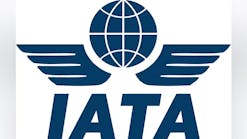Ever since the 1940’s the vertical defiance of gravity has fascinated the aviation community. The ability to hover above a fixed point and enjoy the view has not lost its thrill. Let’s not forget the exceptional utility of these miraculous mechanical marvels. Helicopters are used extensively for heavy lift, patient rescue, law enforcement, news gathering, agricultural spraying, and many other jobs that require the vertical or stability capabilities of these machines. With this utility comes trade-offs. Flying helicopters safely and precisely requires continuous training and practice, as well as frequent and intensive maintenance and high operating expenses can lend to difficulty in obtaining insurance.
Specific Generalities
Aviation underwriters face several realities when they consider accepting a helicopter “risk.”
Flight training in helicopters is a relatively high risk activity –
Helicopter flight training requires that the student pilot perform maneuvers on the edge of their ability. Having an experienced flight instructor on board is crucial not only to training the student pilot the skills and judgment necessary to operate the helicopter, but also prevent accidents during training.
Helicopters operate in unforgiving flight environments –
Helicopters fly and hover close to the ground, operate from off-airport sites and often near obstacles. The threat of striking an object with a rotor, operating with low ceilings and visibility, and division of pilot's attention to systems inside and outside the cockpit add to risk factor.
Repairs can be expensive –
A friend of mine uses a simple budget when calculating the costs of repair on his helicopter. “Small components are $1,000, larger components are $1,000 x 10, then multiply the sum by 10, then multiply …” Well, you get the idea.
With thousands of parts on a helicopter that may be damaged in an accident, repairs can be extremely expensive. In many cases, the manufacturer stipulates that airframe components are not field repairable and must be replaced if damage is even suspected. The cost for parts, and the labor to repair and install, can be shouldered by the insurance company in the event of a claim.
A partial loss is uncommon -
The large amount of energy and moving parts which are characteristic of helicopters typically results in severe damage to the helicopter. Physical damage claim payments are often for total amount the helicopter was insured for.
There are many other factors that contribute to the overall underwriting risk equation during the evaluation process. Overall pilot experience in rotorwing, and in the specific make and model helicopter being flown weigh heavy on the underwriter's pen when calculating premiums.
Accident rates impact the helicopter underwriting process more than most. Since there are not as many ‘units’ to spread the risk, the insurance premises Law of Large Numbers doesn’t apply. In fact, there are more automobiles in an average suburban city than helicopters in the entire USA. When a significant accident occurs, the ripple effect can be felt through the entire helicopter underwriting community.
In summary continued emphasis on quality maintenance to reduce the mechanical risk, frequent training to maintain proficiency, and standard operational procedures will all help to minimize the risk of operating these thrilling machines.



